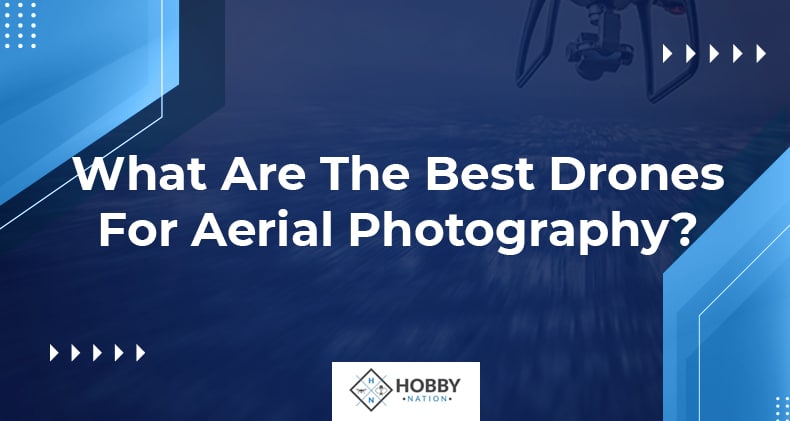If you're considering investing in a drone for aerial photography purposes, then you already know that these devices can capture footage, otherwise only taken by planes and helicopters. Lately, more photographers are making drone purchases and giving aerial photography a shot. But what are the best drones for aerial photography?
The best drones for aerial photography are equipped with the necessary features and tools to make capturing premium-quality footage possible. You'll also need to learn which brands are at the frontline of this new market and capitalize on that information.
8 Significant Factors to Consider Before Investing in a Drone for Aerial Photography
1. Image Quality
Image quality is directly affected by sensors, and if you have any type of camera knowledge, then you already know this. It is the same with aerial photography.
A 1-inch sensor seems to be the standard when it comes to both photography and consumer drones. More powerful photography drones make use of a 4/3-inch CMOS sensor.
The purpose of a larger CMOS sensor is the ability to capture premium-quality footage in low light conditions. This is especially important if you want to take pictures at night. Other than that, this functionality is not something you should worry too much about.
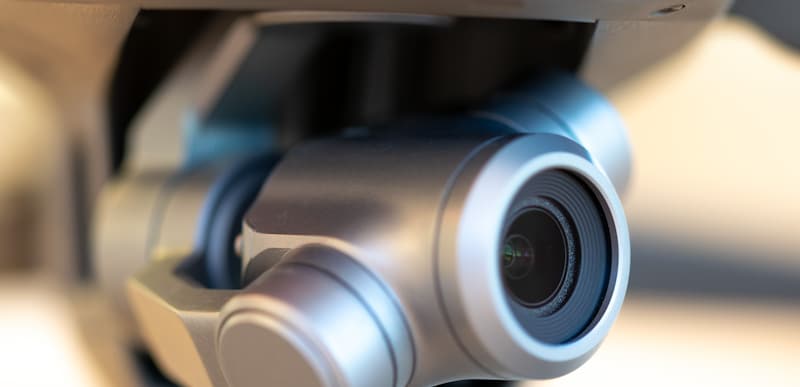
2. Mounted Gimbal
If you're going to be taking video as well, then consider a mounted gimbal. It is a pertinent piece of equipment for capturing steady videos. Therefore, without a gimbal, your videos are bound to be shaky and lack clarity. So always ensure that you opt for a drone with a mounted gimbal.
3. 4K Video Capability
Like smartphones and many other gadgets and devices, the video resolution on drones varies from HD to 4K. Typically, if all you're going to be doing is adding filters to videos and then posting to Instagram and Facebook, a 1080p resolution will do just fine. However, if you are a serious vlogger and want to capture graphic and lifelike videos, then you need a 4K resolution drone. You'll have lots of extra pixels to keep the clarity even after cropping, scaling, and rotating your videos.
When looking at drone specs, you may have noticed something called FPS or frames per second. This is simply the number of distinctive successive photos that a drone can take each second. While 24 to 30fps takes smooth images, you may need a 60fps spec for slow motion and special effects.
4. RAW/DNG Format
Almost every photographer edits their photos in some way. Lots of photographers make use of Lightroom or Photoshop for post-production. However, if you don't do this, then this section doesn't apply to you. A drone that can shoot RAW/DNG images gives the photographer a huge advantage when it comes to post-production editing. These formats will basically allow all of the data received by the camera's sensor to be recorded. Ultimately, this functionality creates more opportunities for photographers and is especially helpful for shooting images at night.
5. Flight Time
Even the most advanced drones designed for aerial photography cannot stay in the air for longer than 30 minutes, and this is an issue that the drone industry has not been able to resolve as yet. In fact, most drones equipped with a flight time of around 20 minutes are considered quite impressive in the drone industry. It is definitely always better to choose a drone with a longer flight time as opposed to one with a shorter flight time. However, 30 minutes is considered the standard. Even though drones are only able to stay in the air for approximately 30 minutes, there are lots of ways that you can make the most out of every second such as investing in additional batteries.
6. Hovering Capabilities
Image quality is hugely dependent on stable hovering. If the drone cannot hover, then it will lead to constant drifting, falling, rising, and consequently blurry pictures. In order to be capable of stable hovering, the drone must possess advanced onboard sensors as well as a competent control system.
7. Smart Functions
Even though drones' cost has plummeted over the years, photography drones are still priced high. This is because they contain competent flight control systems, high-image quality, and smart functionality, which all work together to help you shoot the best possible pictures. Just some of the features to look for are the ability to take selfies using a gesture, the ability to track people, and of course, fly away points. Depending on the purpose they were designed for, some drones and the brand are equipped with other unique features and functions like dual operation and mechanical shutters.
8. Popularity of the Drone
Popular drones may not be cheap; however, there are many perks to owning a famous brand. For one, you won't need to go hunting for answers to your questions as they will be readily available. So in the event that you have a problem with your drone, you will be able to get answers quickly through social media platforms, online forums, and of course, from other pilots. As a bonus, you'll find hundreds of videos dishing out tutorials and tips that will ultimately help you become a better pilot and aerial photographer. Another huge bonus is that accessories and parts are easily accessible.
Top Recommendations
Inspire 2

The Inspire 2 is loved by both aerial photographers and vloggers alike. It has the ability to record videos in 6K DNG and RAW delivering videos that are nothing short of cinematic. It reaches speeds of up to 58 mph and goes from 0 to 50 mph in approximately 5 seconds, thanks to its dual operators, 360-degree gimbal, and FPV camera. This Hollywood-quality drone is ideal for anyone looking to add to their own photography business.
Pros:
- Up to 27 minutes flight time
- Interchangeable cameras
- 58 mph maximum speed
- Self-heating batteries
- Dual battery system
Phantom 4 Pro V2.0
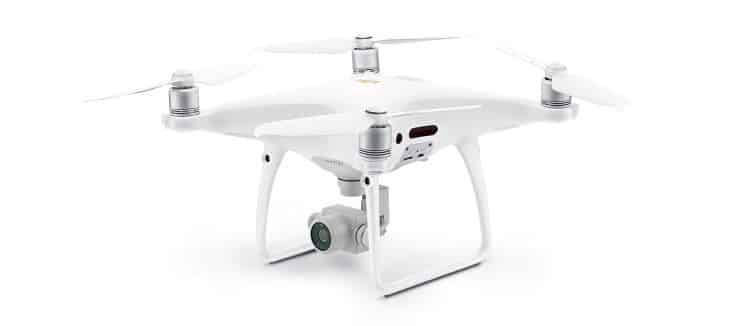
This drone contains lots of features that its predecessor, the Phantom 4 Pro, contains and a few great features of its own. One of the biggest improvements is the new remote controller, including an OcuSync video transmission system. Clear transmission up to 7 km away is achieved thanks to this feature as it allows switching between 2.4 GHz and 5.8 GHz. The Phantom series is well known for its outstanding picture and video quality which is credited to the 1-inch sensor and 4K 60fps functions.
Pros:
- Up to 30 minutes flight time
- OcuSync HD remote controller
- 4.3 mi maximum transmission distance
- 45 mph maximum speed
- Smart flight modes including Draw, TapFly, and ActiveTrack
Mavic Pro

The Mavic Pro, or Swiss army knife of drones as it is often referred to, is well known for its versatility. The DJI product is really a jack of all trades and capable of 12-megapixel photos, thanks to its DNG support. The drone contains 7km flights, 4K 30fps video capability, and 27 minutes of impressive flight time. It is equipped with a 3-axis mechanical gimbal, advanced flight safety system, and multiple smart flight and photography modes for those who are still not impressed.
Pros:
- 40 mph maximum speed
- Up to 27 minutes flight time
- Smart flight modes
- FlightAutonomy system with intelligent sensors to avoid hitting obstacles
Mavic Air
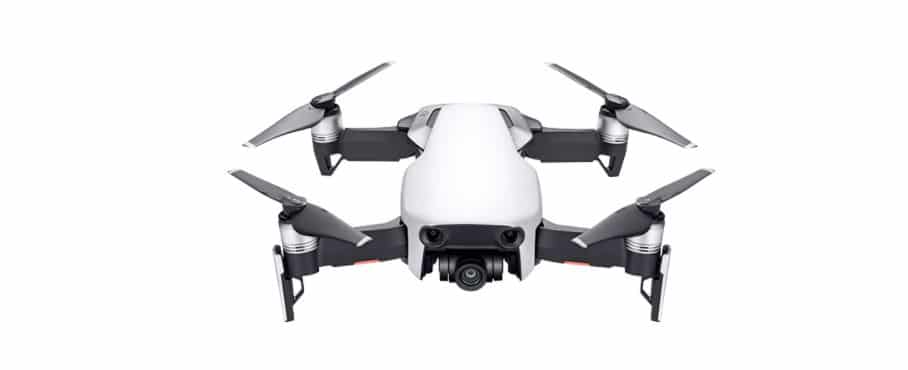
Packed into a mobile-friendly and small package, the Mavic air is a professional image capturing drone. If you're all about capturing high-quality images and videos, look no further. This drone will do the trick, and it's easy to carry along anywhere. Its portability does not take away from its awesome features, and you still get a 4K 30fps video quality, 12-megapixel shots, and it is comparable to some of the top drones on the market.
Pros:
- 42 mph maximum speed
- Up to 21 minutes flight time
- 430g in weight
- Includes advanced pilot assistance systems
Mavic 2
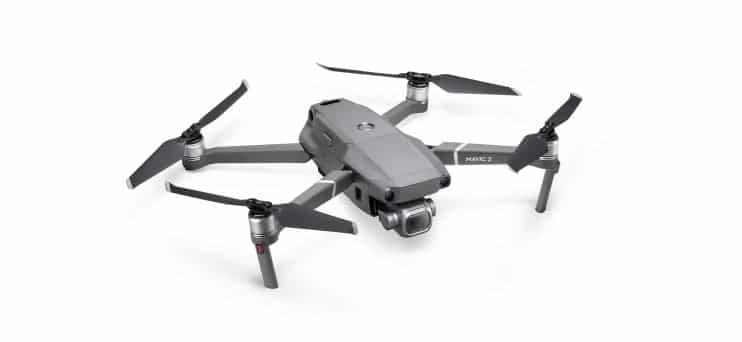
Ideal for hobbyists, enthusiasts, and professional photographers, the Mavic 2 is DJI's latest flagship. This model contains two lens options which are the Pro and Zoom. You get a Hasselblad camera with a 1-inch CMOS sensor with the Pro option and a 1/2.3-inch 12-megapixel sensor with two-times optical zoom with the Zoom option. With both these choices, you get 31 minutes flight time, Omnidirectional obstacle sensing, 8 km transmission, and, of course, easy-to-use flight modes and features that make shooting crystal clear images a breeze.
Pros:
- 44 mph maximum speed
- 31 minutes flight time
- 4.97 mi transmission range
- Two lense options
- Creative capturing options such as Hyperlapse and Dolly Zoom
- Sensors on all sides for advanced avoidance of obstacles
Autel EVO 2
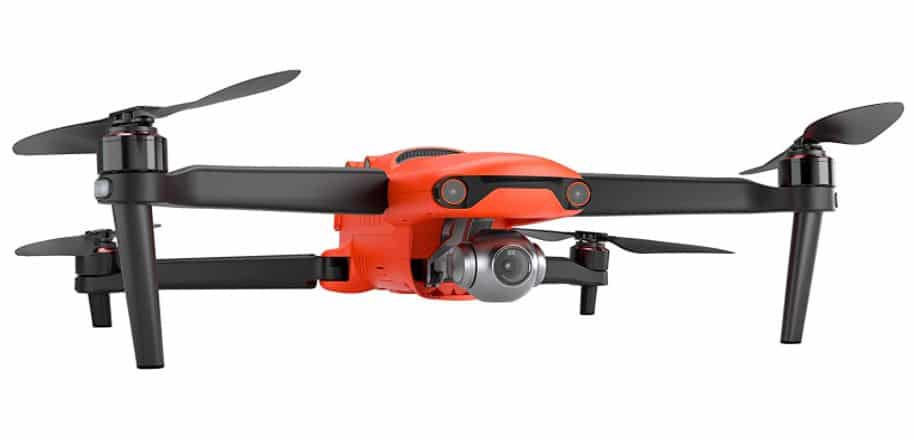
Like the Mavic 2, The Autel EVO2 has different camera choices to choose from. Featuring a heavy and durable-looking build with an orange airframe, it exudes a practical yet consumer-friendly design. While this drone is much chunkier than the Mavics, it can also fly for longer. It is not as polished as DJI's drones but has some amazing tracking options. One feature that stands out is the 3.3-inch OLED screen that fits in the remote. It allows your drone to take flight without connecting your phone to it at all.
Pros:
- 8K video quality
- Omnidirectional sensors
- 48-megapixel camera
- 8K shooting is limited to 25fps
PowerVision PowerEgg X Wizard
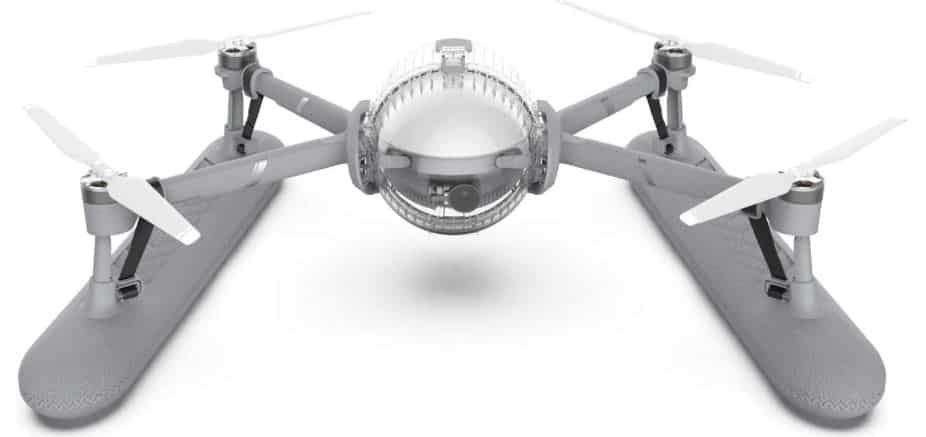
This company is quite creative and has been manufacturing underwater drones for about as long as they have been making flying ones. While they did release the PowerEgg previously, and it was an impressive product, the company has decided to take things back to the drawing board and came up with the PowerEgg X. This new drone is practically beach ready and can land on water or even fly in the rain. Equipped with the hand-held tripod-mounted camcorder and Artificial intelligence, it really is an incredible device.
While it has a standard 4K camera, it is capable of 60 fps in good lighting conditions. This is double the frame rate of the DJI.
It will take a minute or two to attach landing and housing gear, but this is crucial as it covers the object tracking sensors and forward-facing collision. To date, there isn't anything else on the market that comes close to the PowerEgg X.
Pros:
- Water-landing and waterproof mode
- Camcorder mode
- Small image sensor
- Audio-sync recording
Parrot Anafi FPV
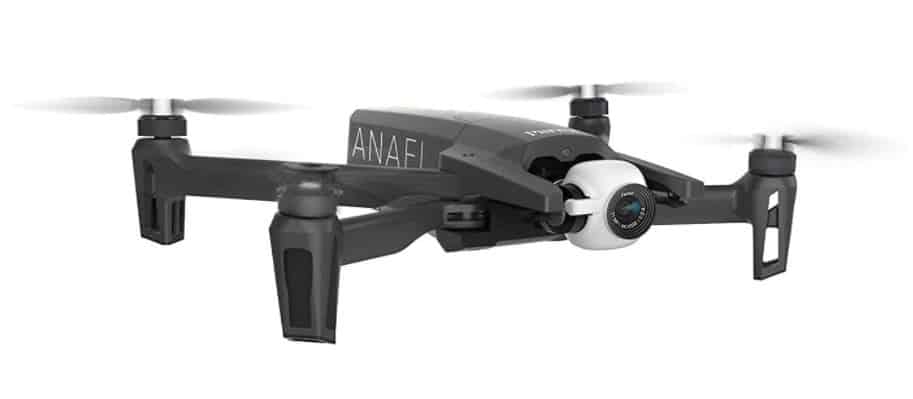
Although it wasn't a runner in the high-end aerial video market, it's definitely worth the wait. It doesn't have the best features when it comes to avoiding obstacles, but it has loads of other features to make up for that. The price and portability are reasonable, and it contains a hard-fabric zip case too. So you can take it just about anywhere.
Some users complain that the carbon-fiber elements of the case are flimsy, but it is still one of the best materials for drones. The drone is easy to operate with automatic take-off, GPS-based return to home, a well-built folding controller, automatic landing, and a hinged phone grip.
Only two axes power the gimbal, and Parrot charges extra for in-app features. The gimbal, however, may be turned all the way up to get an unobstructed angle, and most drones on the market today do not contain this feature.
Pros:
- Portable
- Two-axes control
- 4K @ 100 Mbps with HDR
- 180-degree vertical turn gimbal and zoom
Ryze Tello

If lightweight, simple and affordable are high on your list of must-have features, then look no further than the Ryze Tello. It is designed to be loads of fun for first-time drone flyers, and, in spite of its affordability, it offers plenty. You can expect a reasonable flight time of 13 minutes, and it can also hover in place. You will also get to enjoy the handful of automated tricks that this drone offers.
The 5MP camera is admittedly not impressive and offers sub-par image quality. Drops in connection strengths will affect the video quality as well.
The app itself is fairly easy to use and pilot the drone. The slightest breeze is able to shift this drone weighing only 80g, but the 30-40m range helps with that.
So while it may not be suitable for professional photographers out there, it definitely is a great drone for first-time flyers.
Pros:
- Lightweight
- Affordable
- 13 minutes flight time
- 100-meter range maximum
- 80g
DJI Mini
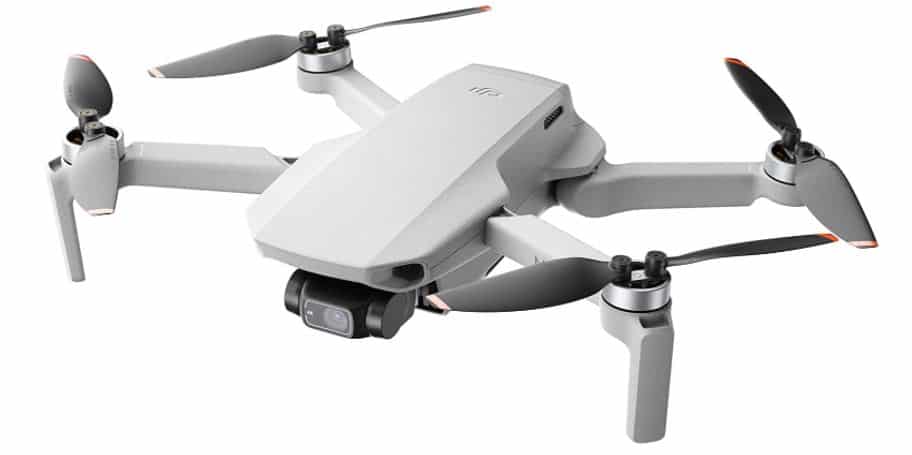
This is an ultra-compact drone that is still selling. So it is still a viable option for anyone looking for a palm-sized aerial device with great video quality. Considering its weight category, you still get a whole lot of bang for your buck. So it's not the cream of the crop, but if you are looking to invest in a drone for the first time, this is the right choice for you.
Pros:
- Compact
- Lightweight
- Collapsible design
- Stable video capture
DJI Matrice 600
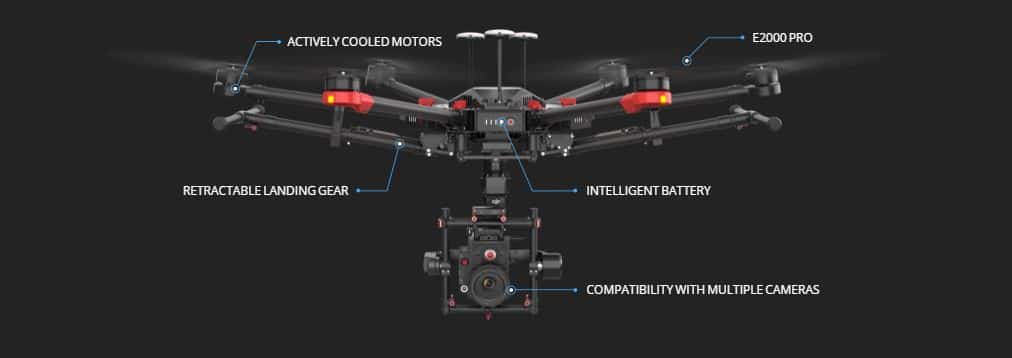
If you're looking for a drone to take your aerial photography to the next level, this is the one. It doesn't get better than the DJI Matrice 600 with six rotors and various photo and video applications. This drone is, in more ways than one, a culmination of DJI's best features across various drones. For instance, this model is controlled by the A3 flight controller. It also links back to the landscape with help from the Lightbridge 2 transmission system and has a range of 5KM. The unique battery management system includes six interchangeable batteries.
The drone has a wide range of camera payloads and is completely compatible with the DJI onboard SDK.
Pros:
- 5KM range
- A3 flight controller
- Customizable
- High frame-rate broadcasting
- six interchangeable batteries
How to Get Started in Aerial Drone Photography
As is the case with the majority of modern technology, there's a huge range of unmanned aerial vehicles or drone technology available. As a general rule of thumb, the amount of money you're willing to fork out for a drone will ultimately dictate the quality of the camera as well as other features and tools that come with it.
Drones are available in entry-level models that will take basic images and top-notch categories that can take your photography business to the next level. Some models allow you to attach a GoPro and make good use of your existing camera Gear. Some of the top brands in the drone industry are DJI and Phantom, and they undeniably make the most popular drones on the market, with good reason. Or you can get a GoPro drone that already comes with the camera and all the features of GoPro.
Where to Start
Ease-of-use is a big advertising feature of most drones. In fact, it's not unheard of, and you'll commonly hear the term "fly straight out-of-the-box" being used, and of course, this is very true. All you need to do is make sure your drone's battery is charged, download the app to your smartphone, fire up your drone, and off you go.
However, we have to mention that as easy as drones are to fly, it's not a fully automated process. a big part of Aerial flying depends on common sense. So we suggest that you start with a few limitations and quickly set up on the smartphone app that runs the drone. Start by limiting the height you can fly your drone and the range you can send it. If you're taking your first flight, we suggest that you start somewhere that is wide open such as an open field or a local park, and spend some time getting a feel of the controls before you even consider pressing the shutter button.
Incredible Technology
The cutting-edge technology contained in drones has revolutionized how aerial photography is done. Here are a few of the bonuses:
- When you sync your drone with the smartphone app, you are able to view exactly what your drone is seeing directly on your smartphone.
- The controls on the drone cameras come with extensive features.
- When it comes to hovering capabilities, well, that's what drones are made for. You can even leave the controls, and your drone will stay hovering in the air stably.
- Drones come with many failsafe flight options. When the battery is low on your drone, it goes into automatic return-to-home mode. This usually happens after 20 minutes of flight time. So you never have to worry about your drone's battery dying and it falling to the ground, only to be snatched up by someone else.
- The RTH function is also activated when flying between buildings and tall trees. Even when you lose sight of your drone, you can simply press the RTH button, and it will come right back to you like a boomerang.
Rules and Regulations
Different countries will have different rules surrounding drone usage, but they are all more or less along the lines of the following rules:
- LOS, or line of sight, means that your drone should always be in your sight.
- You should never fly over groups or crowds of people.
- The maximum height your drone should go is approximately 133 meters or 400 feet.
- Respect the privacy of others
- Never fly anywhere near an airport or other no-fly zone specified by your country.
- Drones have gotten a bad rap in the past, and it's mostly due to irresponsible pilots who disregard the laws surrounding drone usage.
- However, if you take note of the rules, fly with care, and don't invade the privacy of others, you should not have any problems with local authorities.
- So fly with a positive attitude in mind and if you are ever approached by law enforcement, explain what you are doing in an easy-to-understand way.
- A part of the appeal for photographers investing in drones is to make money from aerial photography. However, you still need to find out what is your countries take on paid aerial work.
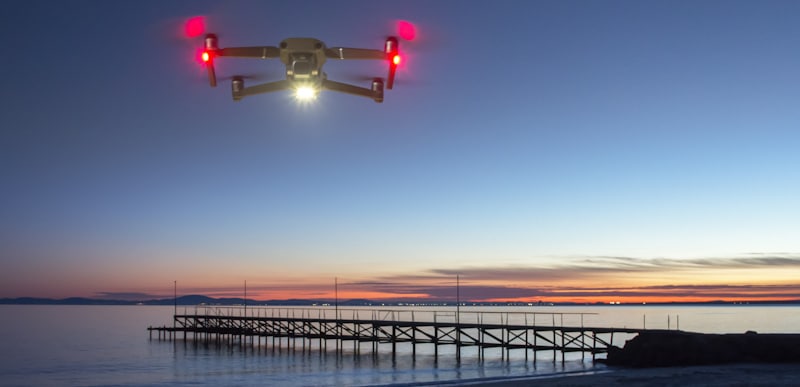
Shooting images
Taking images on your drone for the first time is exhilarating, and you'll be tempted to get home quickly so you can admire the work of your hands. Everything will look great in the beginning. However, you will soon realize that aerial photography also depends on good lighting, like other forms of photography. So avoid randomly heading out and rather chase the light.
Also, be aware of weather conditions. While there are one or two drones that have water-resistant properties, most of them don't. Take into account the wind forecasts as windy weather conditions can be detrimental to your drone and probably whisk it away. So flying in high winds is an immediate no-no.
While image quality ultimately depends on the quality of the camera on your drone, a drone that can capture RAW files is the best option. When flying in good light, JPG files are also impressive.
Panorama images are also available on most drones, creating unique shots. Time-lapse options are available, so why not try it out at 300 feet? Most drones are equipped and designed to shoot high-quality videos in 4K.
The Views
When viewing the landscape from above, you will notice some awesome patterns on the ground that you wouldn't be able to get otherwise. Drones make capturing these views that were previously only available to planes and helicopters possible. Google maps is a great place to start when looking for interesting locations to capture images and video footage.
What You’ll Need
Batteries and Chargers
In order to keep your drone airborne, you need these accessories on hand. Never leave home with spare batteries, charger, propeller blades, Drone maintenance tools, carry case, and spare parts. However, take note that the battery charger and, of course, batteries remain the most important.
Also, note that repeatedly charging your drone's battery within short periods of time will cause it to overheat. So a better option is to keep a couple of fully charged batteries on hand.
FPV Goggles
Being able to see what your drone sees is crucial to taking great images. The best way to do this is to have an FPV or first-person view.So by wearing an FPV screen or goggles, your drone will transmit the video feed it sees to your mounted camera.
So this accessory allows you to basically see what your drone sees in real-time. So only once you are satisfied with what you are looking at do you need to press the shutter and take the shot.
Transmitter
Your drone is controlled using a remote controller or transmitter. Some of them have basic functions, and others contain advanced features able to control extra channels and camera features.
More to learn: Cheap Drones For Photography To Buy In 2022
The Camera
Consider whether you want to have your DSLR mounted to your drone. In this case, your drone needs to be powerful enough or have enough payload to lift and maneuver the weight of the camera. Alternatively, smaller and lighter cameras are available.
The Gimbal
The Gimbal is basically the stabilized frame or harness beneath the drone. Its purpose is to carry the camera and keep it level. It may also be used to point the camera remotely in a particular direction.
The price and size of these accessories vary, so choose a drone that will allow you to be versatile when it comes to accessories like these.
Commercial Applications for Drone Photography
What exactly is aerial photography? Well, when you capture images from a flying object, it is referred to as aerial photography.
This is irrespective of whether it is a kite or drone taking the shots.
Drones are able to increase your earning potential as a photographer in many ways. Irrespective of whether you are into the wedding, landscape, or commercial photography scene, drones present numerous options to take advantage of.
Wedding Photography
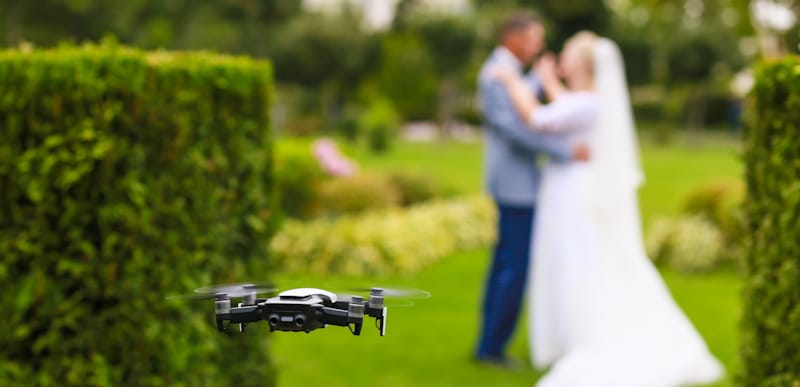
There are people who don't mind traditional wedding photography, and then there are those who want exceptional quality and don't mind paying for it. Drone's give this market the perspective they are searching for in their wedding photos. The UAV industry is seeing massive strides in drone usage for wedding photography since drones are now equipped with various tools and features to make anything possible.
Studio Lighting for Photoshoots
When it comes to setting up a studio with lighting options and making it ready for a photoshoot, the amount of work that goes into the process can be tedious and tiring, Not to mention the fact that the lights are in a fixed position. By using a drone equipped with light, photographers can shift it to suit the light requirements by using a remote. This presents endless creativity options in the photography industry.
Aquatic Photography
Have you ever wanted to capture family moments underwater? Or perhaps capture the beauty of a seabed; well, you're not alone. A couple of drones like the Ziphius have answered this call. These aquatic drones can capture images and videos underwater, which opens up a plethora of opportunities and endless creative options for budding photographers.
Filmmaking
The face of cinematography is rapidly evolving, and it's all thanks to drones. Not only are they more cost-effective than hiring a plane or helicopter, but they actually enable better images and videos.
Sports and Motion Photography
It may have seemed far-fetched to say that drones will take over sports photography a few years ago, but it is now very much a reality. They are already making a fabulous show at the Sochi Olympics. Not only are drones making ski and snowboarding images accessible, but they will become more relevant in all sporting events. It eliminates the need for multiple types of equipment being mounted all over a sports venue and the need to have an entire camera crew. A simple remote-controlled drone will capture real-time images and videos of sports as they occur.
Real Estate Photography
If you are a property agent that wants to stand out from the crowd, using drones in your real estate photography will help you achieve just that. When it comes to adding a different or unique perspective to the property being rented out or sold, drones accomplish that. It gives you a clearer view of the property, and other features such as virtual walkthrough options can also be incorporated into your real estate photography.
How to Enhance Your Aerial Images
The cameras on drones are equipped to shoot great quality images, and videos and most of them take 4K videos. The DSLRs that professional photographers use, however, may still provide better image and video quality.
The good news is that if you invest in the right drone, you can still use your DSLR camera with it. Drone technology is getting better, though, and you can expect these current limitations to be removed in the near future.
Flying Low
Flying low will allow you to take the best pictures. Although regulations allow you to fly as high as 400 feet, a height of between 100-150 feet is suitable for great pictures. You'll have a more interesting perspective, but if you want to capture top shots that only height can get you, you are welcome to go as high as 400 feet.
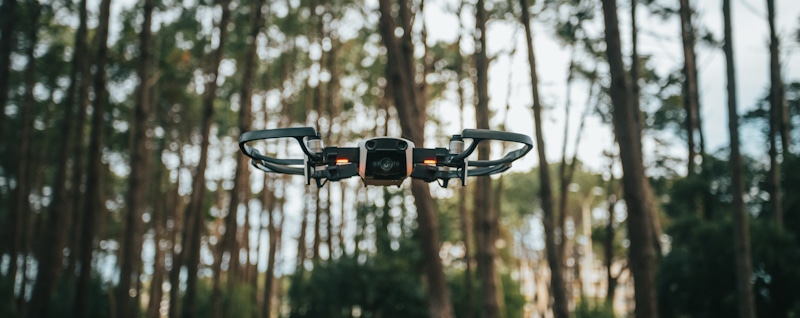
Filters
One of the limitations of drones is the shutter speed. This is due to the single aperture setting. Neutral density filters may help you with this as they reduce the volume of light that gets into the lens, therefore making the shutter speed slower. To get more vibrant or deeper images of skies and such, use polarizing filters to eliminate the harshness of the sun's rays and reflections.
Automatic mode
Seasoned photographers shoot in manual mode and have complete control over all factors. But with drones, automatic mode is best. This is because what you see on your screen may not be an accurate representation of what the image is going to look like. Once you've mastered the automatic mode, you can easily start using manual mode and work in various conditions.
Brackets
Three-step bracketing is a practical feature that most drones are equipped with. This function gives you three options to choose from, which are standard, overexposed, and underexposed images with every shot. The best image can always be chosen later and also improved with the use of post-processing software.
Conclusion
Drones are changing the way we do things in various ways. Not only has it opened up endless possibilities for aerial photographers, but it is revolutionizing the way that images and videos are being captured in multiple industries. Drones are also becoming a pertinent part of search and rescue missions, delivering goods for major companies, and being used to gather information in places that people cannot go.
Consequently, the technology used in drones is being upgraded, enhanced, and is constantly pushing the limits to open up new possibilities for the future. Water-resistant aquatic drones are now even a thing.
If you are a budding photographer and you want to take your business to the next level, you will not go wrong by investing in a drone for your aerial photography. Develop an impressive portfolio and see what the future holds as you experiment with aerial photography. Identifying your needs as a photographer is the first step in choosing a drone that is best for you. If you are just starting out, go for an entry-level drone, and once you are comfortable using it, you may upgrade to a more advanced drone.
Continue Reading: Best RC Shooting Tanks With Working BB Guns
Shawn Manaher loves to play with new toys and dive into new hobbies. As a serial entrepreneur, work definitely comes first but there is always room for hobbies.

